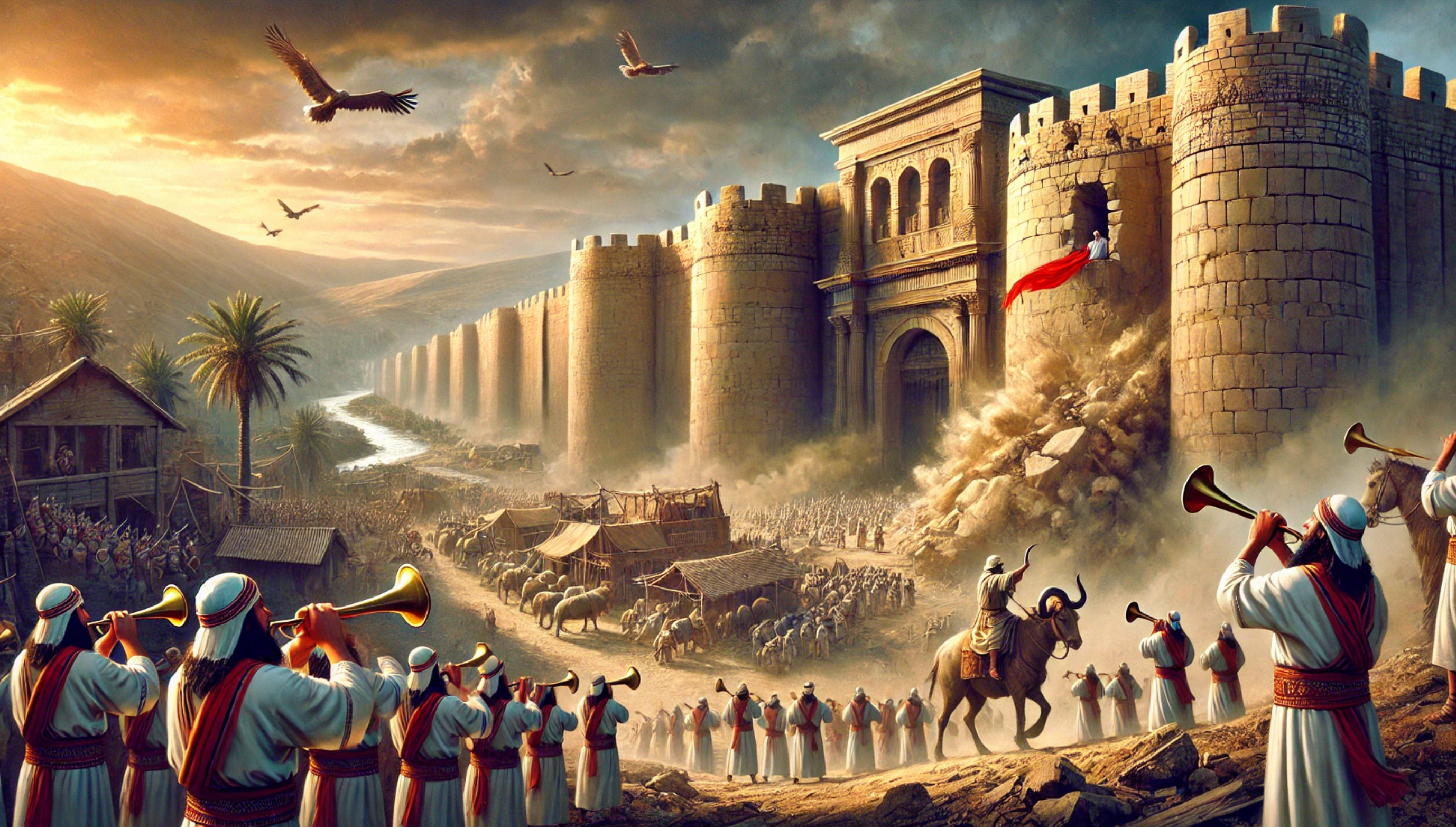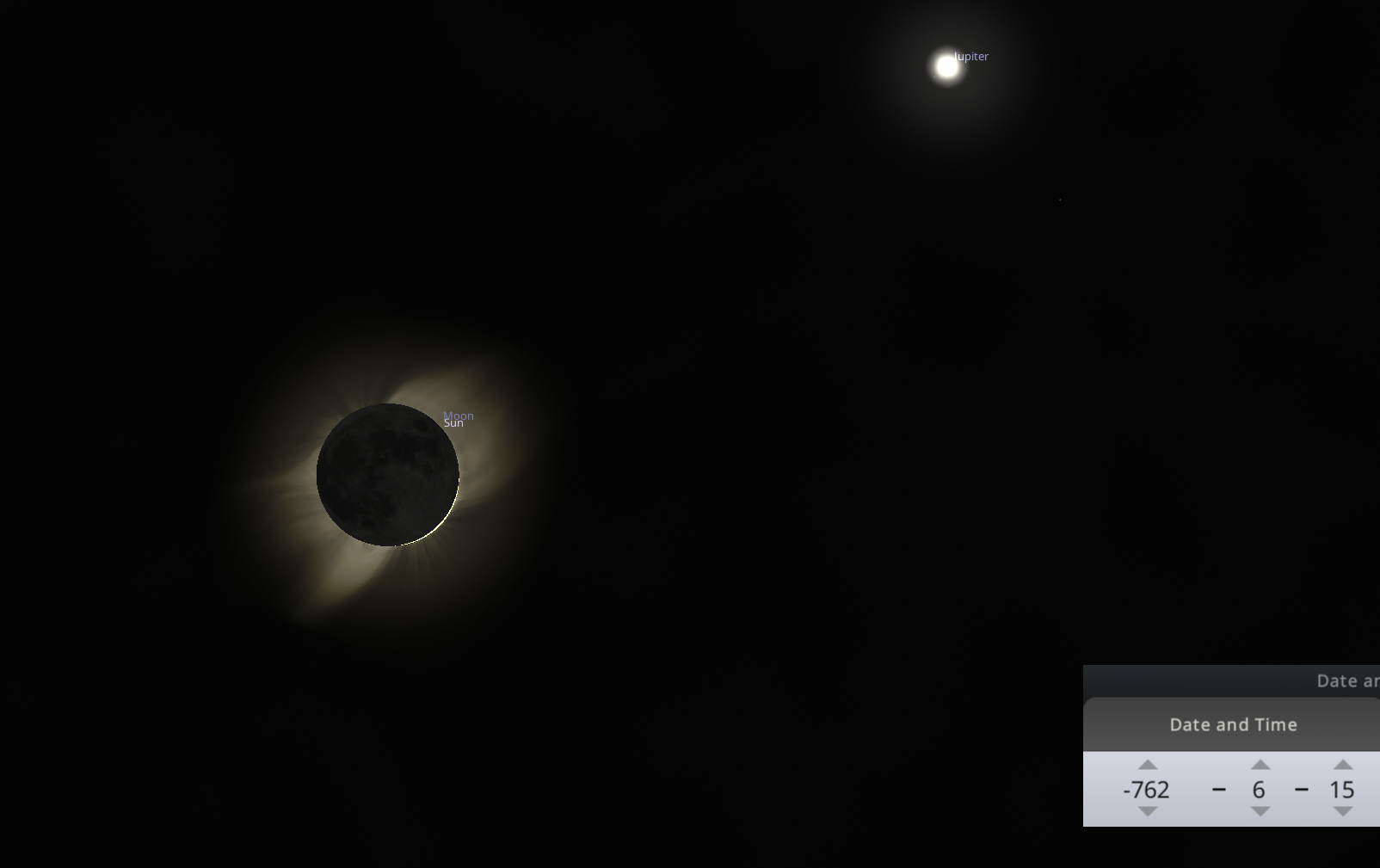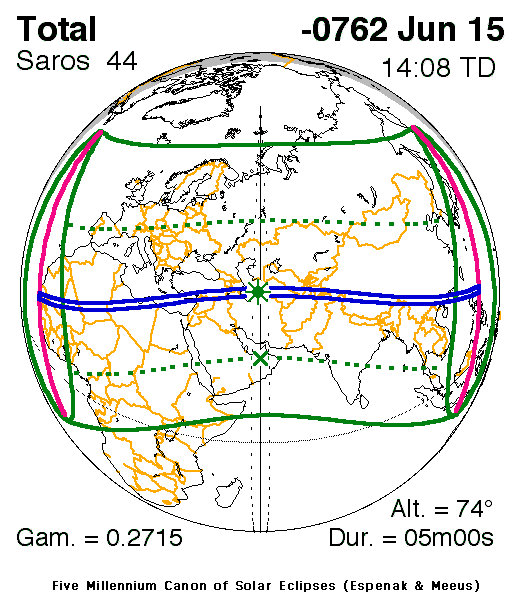The Exodus and Conquest of Canaan

Published on: February 19, 2025
What is an Eclipse?
An eclipse is an astronomical event that occurs when one celestial body moves into the shadow of another, temporarily blocking light from a source such as the Sun. There are two main types of eclipses: solar eclipses and lunar eclipses. A solar eclipse happens when the Moon passes between the Earth and the Sun, casting a shadow on Earth and partially or fully blocking sunlight in some areas. In contrast, a lunar eclipse occurs when the Earth comes between the Sun and the Moon, causing the Earth's shadow to fall on the Moon. Eclipses are rare and spectacular events that depend on the precise alignment, distance and sizes of the Sun, Moon, and Earth.
For more information and detailed animations on how an eclipse works, visit: National Eclipse

This eclipse image can be captured by setting the location to Ninevah (Mosul, Iraq) in Stellarium and setting the date to: -762-06-15 BC.
Source: The Eclipse of Bur-Sagale (763 BC) was first identified and linked to the Assyrian chronology by Henry Creswicke Rawlinson in the mid-19th century.

Five Millennium Catalog of Solar Eclipses: -0799 to -0700 ( 800 BCE to 701 BCE )
NASA Eclipse 0799-0700 BC
The Bur-Sagale Eclipse and the Exodus: Synchronizing Ancient History with Biblical Chronology
The Eclipse of Bur-Sagale (763 BC), recorded in the Assyrian Eponym Chronicle, is one of the most reliable astronomical events of ancient history. Its precise dating provides a unique opportunity to synchronize key events in the biblical timeline, notably the Exodus (1446 BC) and Joshua’s conquest of Canaan (1406 BC). This article explores how the eclipse acts as a chronological anchor, aligning historical, biblical, and archaeological evidence into a cohesive timeline.
Why the Bur-Sagale Eclipse Matters
A Firm Astronomical Anchor
- The Bur-Sagale Eclipse occurred on June 15, 763 BC according to historical records, and June 14, 762 BC based on NASA’s calculations.
- It is documented in the Assyrian Eponym Chronicle, a reliable historical source used to date key events in Assyrian history.
- This eclipse is crucial because it provides a fixed point to calibrate other ancient timelines, including those of Israel, Egypt, and Babylon.
Linking Biblical Chronology to Historical Events
- The Bible states that the Exodus occurred 480 years before Solomon's Temple was built (1 Kings 6:1).
- Solomon’s Temple construction began in 966 BC, thus the Exodus date is calculated as:
- Using the Eclipse of Bur-Sagale as a fixed point, the entire biblical timeline is synchronized with known historical events, supporting an early date for the Exodus.
Step-by-Step Timeline Synchronization
The following table illustrates the synchronization of biblical events with historical records and astronomical data:
| Event | Biblical Reference | Historical Reference | Date |
|---|---|---|---|
| Eclipse of Bur-Sagale | — | Assyrian Eponym Chronicle | 763 BC |
| Fall of Samaria (Northern Kingdom of Israel) | 2 Kings 17:6 | Assyrian records (Sargon II) | 722 BC |
| Fall of Jerusalem (Judah’s Southern Kingdom) | 2 Kings 25 | Babylonian records (Nebuchadnezzar II) | 586 BC |
| Solomon’s Temple Built | 1 Kings 6:1 | Biblical Chronology | 966 BC |
| Exodus from Egypt | Exodus 12 | Calculated from 1 Kings 6:1 | 1446 BC |
| Joshua’s Conquest Begins | Joshua 6–12 | Destruction layers at Jericho, Ai, Hazor | 1406 BC |
| Amarna Letters (Canaanite cities in distress) | — | Egyptian diplomatic records (Akhenaten’s reign) | 1350 BC |
This synchronization demonstrates how the Eclipse of Bur-Sagale anchors the Assyrian timeline, which then aligns with key biblical events such as the Exodus, Joshua’s Conquest, and the building of Solomon’s Temple.
Aligning Egyptian Chronology with the Exodus
Amenhotep II as the Pharaoh of the Exodus
- Amenhotep II (1453–1419 BC) is the most likely candidate for the Pharaoh of the Exodus according to the early date model.
- This corresponds with:
- 1446 BC – The date of the Exodus.
- 1406 BC – Beginning of Joshua’s Conquest.
- 1350 BC – The Amarna Letters describing political turmoil in Canaan.
Amarna Letters and the ‘Hapiru’
- The Amarna Letters are diplomatic correspondences that describe Canaanite rulers seeking help against the “Hapiru” invaders.
- Scholars suggest a connection between the Hapiru and the Hebrews, potentially depicting the Israelite settlement in Canaan after Joshua’s conquest.
Archaeological Evidence Supporting the Early Date
Significant archaeological findings align with the 1446 BC Exodus date and 1406 BC Joshua’s Conquest:
| Site | Biblical Event | Date | Evidence |
|---|---|---|---|
| Jericho (Tell es-Sultan) | Walls Collapse (Joshua 6:20) | c. 1400 BC | Collapsed walls, burn layers, storage jars with grain |
| Ai (Khirbet el-Maqatir) | Destruction (Joshua 7–8) | c. 1400 BC | Burn layers, fortified walls |
| Hazor (Tell el-Qedah) | Burned and Destroyed (Joshua 11:10–11) | c. 1400 BC | Massive burn layer, smashed idols |
| Shechem (Tell Balata) | Peaceful Settlement (Joshua 24) | c. 1400 BC | Peaceful occupation, no destruction layer |
| Mount Ebal (Khirbet el-Maqatir) | Altar Built (Joshua 8:30–35) | c. 1400 BC | Large stone altar, kosher animal bones |
| Hill Country Settlements | Israelite Villages | c. 1400–1200 BC | Four-room houses, no pig bones |
These findings corroborate the biblical account:
- Jericho's walls collapsed outward, aligning with the biblical narrative of Joshua's conquest.
- Hazor's destruction and smashed idols suggest a military conquest fitting Joshua’s campaign.
- The altar at Mount Ebal is consistent with the Israelite religious practices described in the Book of Joshua.
Confirming the Unified Timeline
By aligning archaeological evidence with the biblical narrative and astronomical data:
- The Eclipse of Bur-Sagale (763 BC) serves as a fixed point anchoring the Assyrian chronology.
- This confirms the fall of Samaria (722 BC) and fall of Jerusalem (586 BC).
- Using 1 Kings 6:1 (480 years before Solomon’s Temple), the Exodus is dated to 1446 BC.
- This early date is supported by archaeological evidence from Jericho, Ai, Hazor, Shechem, and Mount Ebal.
- The Amarna Letters (~1350 BC) corroborate the political unrest following Israel’s conquest of Canaan.
Conclusion: Historical Validation of the Biblical Exodus
The Eclipse of Bur-Sagale (763 BC) is the cornerstone of this unified chronology, linking biblical events with historical and archaeological records. This synchronization:
- Confirms the early Exodus date of 1446 BC, aligning with Joshua’s Conquest (~1406 BC).
- Validates the biblical timeline as historically accurate and reliable.
- Aligns archaeological findings with the biblical narrative.
This chronological alignment not only supports the historical reliability of the Exodus narrative but also enhances our understanding of the Israelite settlement in Canaan.
The Eclipse of Bur-Sagale thus cements the biblical chronology and provides a historical framework that harmonizes biblical, historical, and archaeological records into a coherent and reliable timeline.